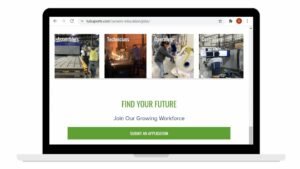Like just about everything in the PR and marketing field, the capabilities of video content have evolved dramatically with the advent of digital marketing.
When I first began my career, video was a one-way stream of communication. Produce 30 seconds, and place it on TV with a competitive media buy. At the end of the campaign, report back how many times it aired and pray you can draw a conclusion to an increase in sales. Spoiler alert: that didn’t cut it for most savvy business owners. They wanted more and they needed to prove results. Yet many advertising professionals didn’t have access to the data to prove anything beyond what they got from the stations.
Today, video content looks a lot different. It should be a part of a greater video marketing strategy that ties into a PR and marketing campaign. I recently sat down with Tony Russell of Content Creators, and he said it perfectly:
“Doing video is the bare minimum. By working with Resolute, we’re not only developing a product that tells the story of the client, but also producing creative that drives the overall content strategy.”
The following are our top tips for getting the most return out of video and how to convert this content into results.
Go in with a plan.
“To be successful, video content has to be engaging and impactful. You shouldn’t show up on shoot day asking what we are going to do,” said Tony.
When the Downtown Tulsa Partnership hired Resolute to drive traffic to local restaurants, the hook was clear. We needed to showcase these downtown heroes and communicate the struggles they’d overcome in the last year of COVID restrictions. In addition, we needed the general public to understand the safety protocols that had been put into place. We also needed them to understand the “new normal” of dining downtown to support these businesses.
Once the bones of the campaign logo and key messaging had been put into place, Resolute worked with Content Creators to develop a strategy for how video content could bring it to life. Over the course of the week, our teams visited downtown restaurants to capture footage and conduct interviews. The end result was a series of videos that were released on the organization’s website, through organic social media and in a Facebook and Instagram advertising campaign targeting Tulsans who live and work downtown.
With more than 80 restaurants downtown, this project easily could have gone off the rails without a plan. While we couldn’t feature them all, the end results tell the collective story of downtown restaurants.
Leave room for the organic story.
Unless you are a trained actor, scripting can actually get in the way of authentic video. Tony recommends engaging the videographer from the concept stage through production and post-production. This comprehensive approach ensures the PR and video team have their antennae up for anything that might further tell the story on shoot day.
INCOG implements an annual cyclist and pedestrian safety campaign where Resolute and Content Creators tell real stories from real Tulsans who have been impacted when people didn’t follow the rules of the road. In a scripted environment, this campaign would fall flat with a list of ordinances and laws. Instead, our teams capture interviews that get to the heart of the issue.
Maximize Your ROI.
Video is more than just a commercial spot. Video can be used on your website, repurposed for social media, profiled in your newsletter and embedded in your sales presentation. Using video as an anchor point for your larger marketing strategy increases your video ROI to help measure success.
In a recent example, Resolute and Content Creators produced a video that not only educated the general public about the existence of Tulsa Ports, but it also promoted a variety of jobs that are currently available at its on-site companies. This video was then promoted through traditional advertising, digital advertising, organic social media and on the Tulsa Ports website.
Measure the results
In the previous Tulsa Ports example, we tracked all of these platforms with a specific call to action – applications submitted through a campaign landing page. However, there are other ways to measure if your video is working. Through Facebook or YouTube ads, you can monitor whether viewers watched to the end of the video. You can track engagement on social media through shares, comments and reactions. You can install pixels to observe traffic that stems directly from your video. Lastly, you can view your website data for free through Google Analytics to determine an increase in traffic and if it correlates with your campaign.
Video is an investment, but it is certainly one that will pay off with the right strategy. Contact us today to hear more about how video content can creatively move you toward your goals.

